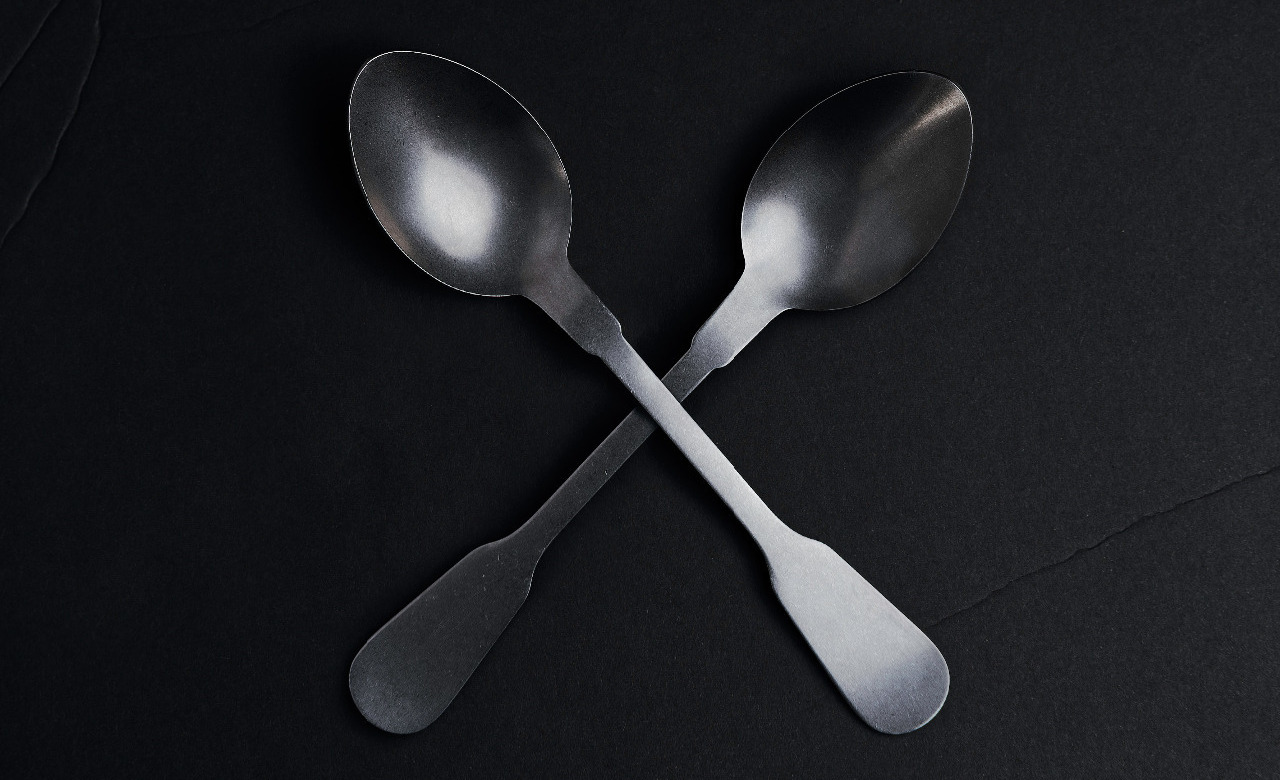How to Play a Simple Rhythm on the Spoons
Posted on 26th February 2021 at 10:55

Beginner Spoon Playing with Percussionist Jo May: Lesson 2
In this series of five mini-videos, Jo May teaches us how to play the spoons. As a professional percussionist, Jo has access to all sorts of different instruments. But she still enjoys making music with a simple pair of spoons. In fact, she’s even had special pairs of spoons made for her to play.
Spoons may seem like a makeshift instrument, but they are still commonly played by professional folk musicians. And they make all sorts of fascinating sounds.
In this video you can hear how the spoons echo and embellish the typical ornaments of a traditional Irish reel:
And in this informal jazz session, you can hear how the player uses the spoons completely differently, both technically and rhythmically. Unfortunately, the lady making the video is so enthusiastic about the spoons she keeps talking, but if you listen carefully, you’ll hear some amazing noises coming from that simple pair of spoons:
You can hear the spoons in many kinds of music, and in music from many different countries. The sound they make depends on the material, size and shape of the spoons, and on the way they are held and played.
As we learned in the first lesson, the sounds are created when different parts of the spoons such as the bowl or the handle collide with each other. In order to make the spoons vibrate, you can hit them against your leg, knee, hand, foot or even another object like a tuning fork.
Back to Basics — First Find Your Grip
In our first video workshop, we learned how to hold the spoons. If you missed this lesson, go back and watch it now. This will ensure that you get your fingers, thumbs and spoons in the right place before you try to make music.
Once you've watched the introductory lesson, you should have found your ideal spoons, and you will be ready to start.
What’s So Great About Playing the Spoons?
Spoons are an accessible way to make complex rhythmic patterns. They sound fantastic, and they connect all sorts of different areas of musical culture and history. But best of all, you can learn to play the spoons in a very short amount of time.
Lesson 2 — Learning to Make Rhythms with the Spoons
In this video lesson, Jo begins by showing you how to tap your spoons on your hands and legs to make sure the spoons are working. If the spoons are sliding around in your hand, that's okay. This normally happens when you start. Try pushing a bit harder with your thumb to keep the spoons in place. As you practice, your grip will improve, and you'll find it easier to keep the spoons where you want.
First, Jo introduces some simple rhythms over a basic pulse. You will learn to hit your spoons on your legs and hands to make different sounds. Remember, while you're practising the techniques in this video, you mustn't hit your leg hard with the spoons. If you hit hard, it will soon start to hurt, and you’re more likely to drop the spoons.
This exercise is a bit like a body percussion game, because it uses different parts of the body to play, and it involves a lot of coordination.
Try to notice if the spoons make a different sound, depending whether you hit your leg or hand.
Next, Jo introduces a roll. This is a special technique that sounds a bit like a drum roll. The spoons make a rhythmic sound very quickly and it sounds quite advanced. To do this, you play the spoons across the spread fingers of your free hand. This works a little like the repetitive rhythm you get by pulling a stick across metal railings.
If the roll isn't working, make sure your fingers are stiff enough. Keep them widely spread and keep your non-playing hand still. Remember there should be a small gap between the spoons in order for them to make a sound.
Once you have practiced the roll, Jo shows you how to add it to the simple rhythm.
Watch the lesson now, and see how you get on:
Want Some More Fun Activities to Try?
In our first post about the spoons, we looked at some amazing spoon playing traditions from Russia. But did you know, the Slavic peoples often used general household items such as pans, pots and saws to create sounds, and to accompany song and dance? You can learn more about making percussion instruments from household items in our blog, Junk Percussion: Recycling, Design and Music. Or you might enjoy trying some body percussion exercises.
Now, it's time to practice your spoons.
And... look out for our next "spoons" video, when we'll learn how to play more complicated rhythms and patterns. See you there!
Share this post:




